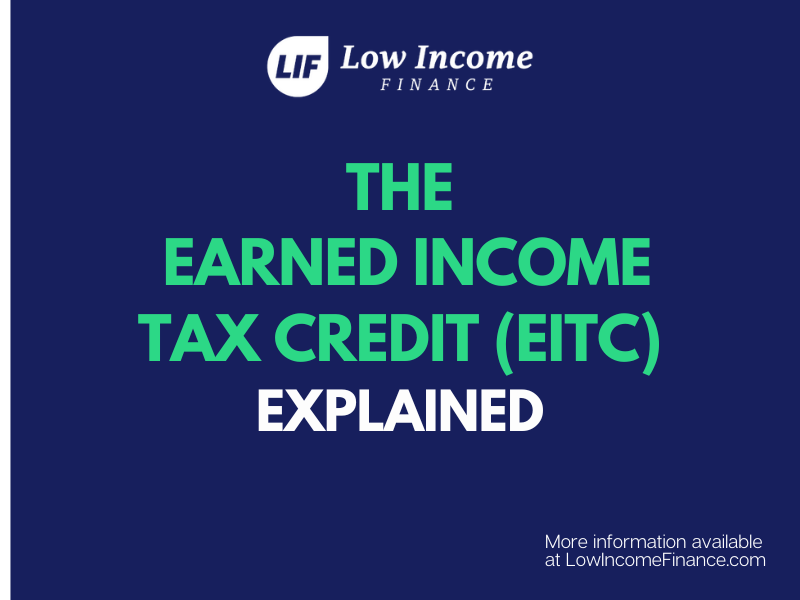This post will cover the 2021 Earned Income Tax Credit tables. It will show the income limits to qualify for the EITC and the maximum amount you can make and qualify for the Earned Income Tax Credit.
Additionally, we will provide details on how much EITC you can get per household, based on the number of children (including households without dependents).
Lastly, we will answer some of the most frequently asked questions, including the rules around claiming children on your tax returns to get Earned Income Tax Credit.

Table of Contents:
- What is the Earned Income Tax Credit?
- Who is Eligible for the Earned Income Tax Credit?
- Earned Income Tax Credit Table for 2021
- EITC Frequently Asked Questions
What is the Earned Income Tax Credit?
The federal Earned Income Tax Credit (EITC) helps low- to moderate-income workers and families get a tax break.
If you qualify for the EITC, you can use the tax credit to reduce the taxes you owe – and maybe increase your refund.
The tax break is based on wages, salaries, tips, and other pay, as well as earnings from self-employment.
Therefore, to be eligible, you have to be earning some form of income either from a job or from self-employment.
Who is Eligible for the Earned Income Tax Credit?
According to the IRS, Low- to moderate-income workers with qualifying children may be eligible to claim the Earned Income Tax Credit (EITC) if certain if they meet certain qualification requirements (see below).
Additionally, you may qualify for the EITC even if you can’t claim children on your tax return.
To find out if you qualify for the EITC without a qualifying child, click here.
Earned Income Tax Credit Table
To qualify for the EITC for the 2021 tax year must meet the income limit requirements, in addition to the other eligibility rules.
Below are the EITC Income Limits for the 2021 Tax Year, otherwise known as the Earned Income Tax Table.
This applies to taxes due in April 2022.
| Federal EITC 2021 Income Limits | |||
| Number of Children | Maximum Credit | Maximum Earnings (AGI) | |
| Single | Married | ||
| Childless | $1,502 | $21,430 | $27,380 |
| One Child | $3,618 | $42,158 | $48,108 |
| Two Children | $5,980 | $47,915 | $53,865 |
| Three or More Children | $6,728 | $51,464 | $57,414 |
EITC Frequently Asked Questions
Here are the most frequently asked questions about the Earned Income Tax Credit Table.
Does my child qualify for the EITC?
Here are the requirements you must meet in order for a child to qualify to be claimed for EITC.
Relationship
If you claim one or more children as part of your earned income credit, your child must be your:
- Son, daughter, stepchild, adopted child, or foster child
- Brother, sister, half-brother, half-sister, stepsister, or stepbrother
- Grandchild, niece, or nephew
There are also special rules for Adopted and Foster Children.
Age
The child must be under 19, under 24 if a full-time student or any age if totally and permanently disabled.
Residency
The taxpayer and qualifying child must live in the same home for more than half of the year. That means more than six months or 183+ days.
Additionally, the residence must be in the 50 U.S. states and the District of Columbia.
Also, the taxpayer claiming the EITC must be a citizen or resident of the U.S. – and cannot be a non-resident alien.
Can Both Parents Claim a Child for Earned Income Tax Credit?
No. A child cannot be used by more than one person to claim the EITC.
If a child is a qualifying child for you and another person, you will need to decide who will claim that child.
According to IRS rules, you can only claim a child for EITC if the child you claim lived with you for more than half of the tax year.
If you’re the custodial parent, you can release your right to claim your children as dependents.
However, once you do that, your ex-spouse (as the noncustodial parent) can claim the exemption and child tax credit for the children.
Also, since you’re the custodial parent, you might be able to file as head of household.
If you meet the qualifications as head of household, you can claim these credits:
- Earned Income Tax Credit (EIC)
- Child and Dependent Care Credit (Childcare Tax credit)
This is the only instance in which more than one taxpayer can claim child-related dependent benefits for the same child.
What Income is counted for EITC?
The IRS considers all income that is earned eligible for the credit. That includes:
- Wages
- Salaries
- Tips
- Union strike benefits
- Long-term disability benefits received prior to minimum retirement age
- Net earnings from self-employment
- Gross income received as a statutory employee
What Income does not qualify for EITC?
The following types of income that do not qualify as earned income for the credit include:
- Child support
- Retirement income
- Social Security benefits
- Unemployment benefits
- Alimony
- Pay received for work while in prison
Am I Eligible for EITC Every Year?
Your eligibility for Earned Income Tax Credit depends on changes in your personal tax situation and any changes in tax law.
It is therefore important for you to check your eligibility for EITC each year.
The following changes may affect your eligibility for EITC:
- a new job,
- unemployment,
- loss of an annual bonus,
- a change in marital status, or
- a change in a spouse’s employment situation.
2021 Earned Income Tax Credit Table Summary
We hope this post on the 2021 Earned Income Tax Credit Table was helpful.
If you have further questions about Tax Credits, or Personal Finance topics affecting low-income households, please let us know in the comments section below.
Be sure to check out our other articles on low-income personal finance.


